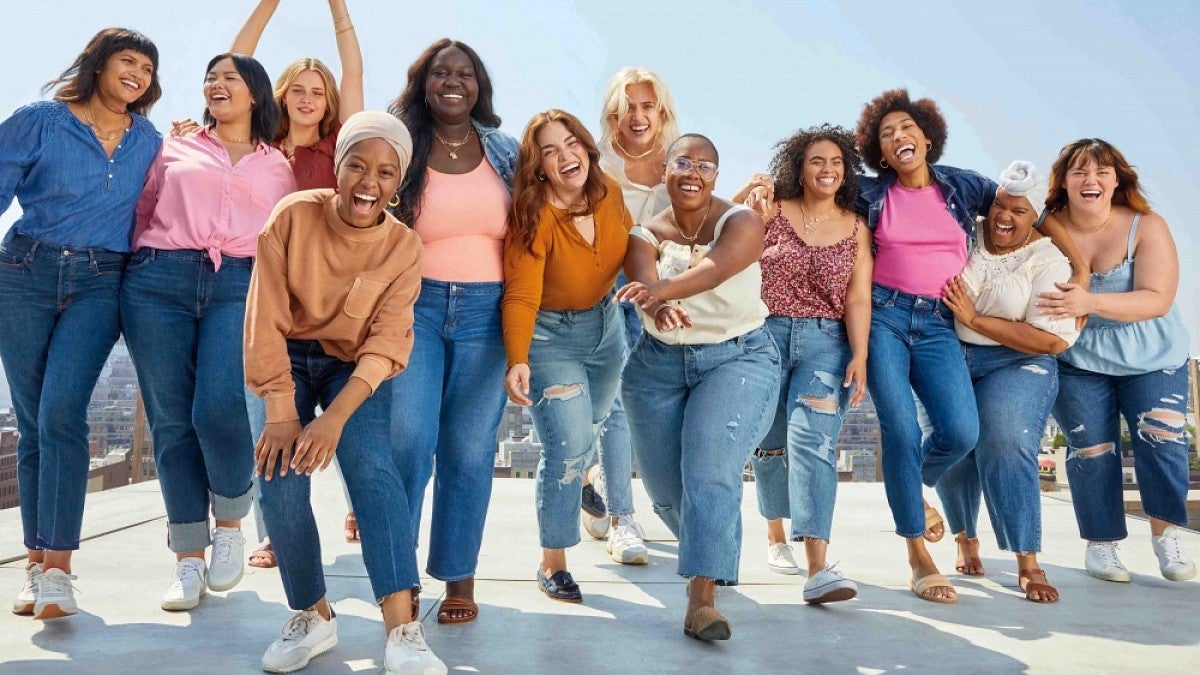Shifting attitudes toward inclusive sizing prompted retailer Old Navy to overhaul its approach to product development, and they turned to UO professor and researcher Susan Sokolowski from the sports product design graduate program for help.
Bodies come in all shapes and sizes, but for decades, women over a size 14, who represent roughly 68 percent of all U.S. shoppers, have been marginalized and shut out of the fashion market.
Apart from companies such as Lane Bryant that specialized in plus-sized women’s clothing, retailers have generally offered a limited selection of higher priced, ill-fitting and unfashionably larger-sized apparel segregated from the racks of “regular” or “core” sizes.
As a global expert in product design, particularly for underserved users, Sokolowski worked closely with Old Navy to define new body shapes and measurements across their women’s size range.
Aided by sports product design graduate students in the College of Design, Sokolowski’s research team measured 3D body scan data obtained from a previous North American survey. Sokolowski’s interpretation of the data indicated that the same body shape does not consistently exist across a size range.
Part of the challenge, according to Sokolowski, lies with companies, who design their apparel using a standard hourglass shaped mannequin shape, ignoring the fact that as the body gets larger in size it evolves into different shapes.
Sokolowski said her research shows that a very small percentage of women over size 14 are an hourglass shape.
“As the body increases in size, there is more variability where soft tissue deposits around the body,” she said. “This matters when you’re designing apparel because you need to think about where materials are located and their percentage of stretch. You also need to think about how the waistband is constructed, the size and placement of zippers, buttons and pockets and achieving the appropriate sleeve and leg lengths.”
She added, “Most companies linearly grade sizes and women often have issues with their apparel being too long because the manufacturer kept growing the leg or sleeve length with each size increase.”
After presenting her findings to Old Navy and the new measurements were agreed upon, fit clinics were held with women sized 20-28 to validate new fit blocks based on the data.
“In the fit clinics women first tried on the old size and then we had them try on the new one so we could visualize the difference between the two fits and receive feedback from testers about how they felt wearing the two different fits,” Sokolowski said.
The biggest takeaway from the fit clinics for Sokolowski was the reaction when women tried on the modified sizes.
“When they first tried on the size that they currently wear with Old Navy they were like, ‘Yeah, this is the size I wear, this is great,’ but then when they put on the revised size what they would say, with no prompting, was ‘Wow, this feels more comfortable,” she said.
Women are so used to being uncomfortable in something just to buy the size, Sokolowski said, that they weren’t really thinking that they could be comfortable.
“It’s an amazing confidence booster to wear apparel that feels good and is comfortable,” she said. “Imagine how that can influence someone’s life. It is a really important shift.”
In August, Old Navy rolled out its Bodequality campaign. Online and across its 1,200 stores, apparel is now available in the new range of sizes at the same price, no matter what the size. Merchandise will no longer be separated, and women of all sizes will be able to enjoy the same shopping experience.
“The work we’ve accomplished is extremely important in the future of size, fit and design,” said Janette Cox, Old Navy’s senior director of technical design and product quality. “We took the time to acknowledge all our customers, of all sizes, and understand what she likes or doesn’t like, and then adapted our clothing to fit their body shapes.”
Old Navy is also training their employees to talk to customers about body positivity, size inclusivity and finding their size.
“It is empowering for women to be able to have someone help them buy apparel that comfortably fits their particular body type,” Sokolowski said.
Sokolowski, who worked in the product industry for more than 20 years, believes that more companies will follow suit in the future, as customers will demand similar services.
“No matter what size you are, women are willing to spend money on fashion,” she said. “Everyone needs clothes.”
—By Sharleen Nelson, University Communications


